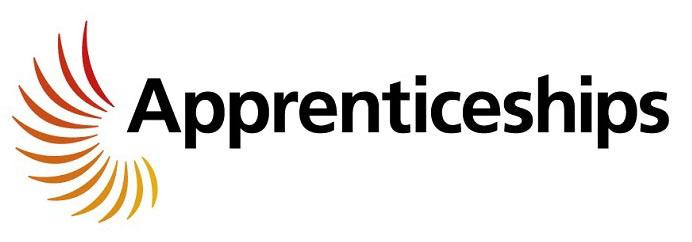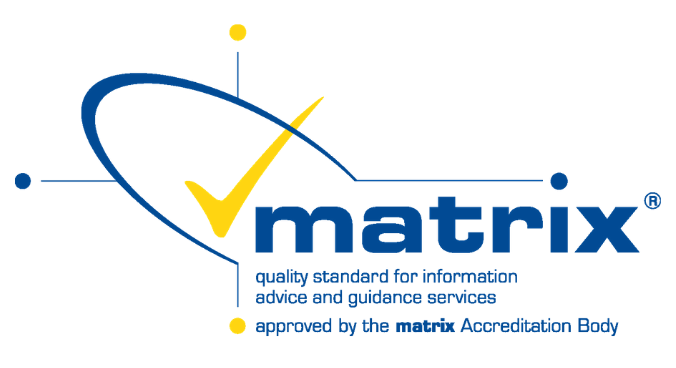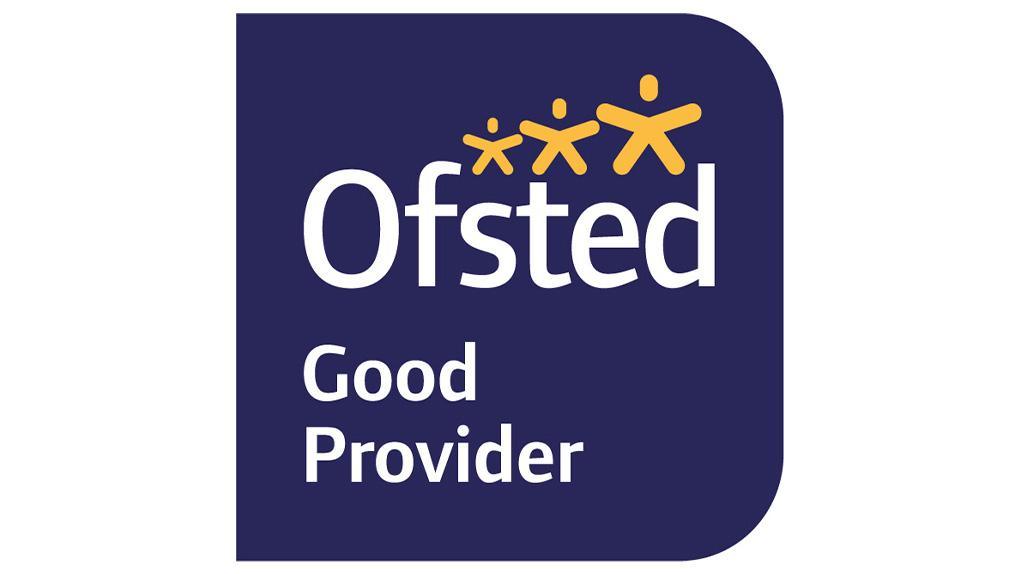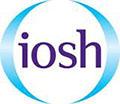
Health & Safety Policy
Introduction
This document is a statement of the organisation’s Health and Safety Policy. The details are below. This policy is not part of your employment contract and it is not legally binding except where it is a statement of the law. You must be aware of this policy and procedure and apply it accordingly; failure to do so may result in disciplinary action being taken against you. You should consult your manager if there is anything that is not clear to you or if you are unsure about any aspect of this policy.
Policy Statement
The person with overall legal responsibility for health and safety is: Sarah Stanway.
Day-to-day responsibility for ensuring this policy is put into practice is delegated to: Dean Turner / Matthew Roberts.
North Staffs Engineering Group Training Association’s objective is to provide a safe, healthy and efficient place of work for its employees and training centre for their apprentices / learners and key stakeholders in its care. This policy is therefore designed to eliminate all possible risks of injury, ill health, damage or wastage.
The company recognises its responsibilities, so far as it is within its power, to prevent injuries or damage to health, safety, and welfare of their employees, apprentices / learners and key stakeholders. To achieve this, the active co-operation of all employees is essential. The Consultation with Employees Regulations 1996 and the Information and Consultation Regulations 2008 requires employers to consult with employees on any matters affecting their health and safety. We do this through Senior Management Team which meets on a regular basis and disseminates information to employees, apprentices / learners and key stakeholders as required.
Responsibilities for health and safety has been effectively assigned to management to ensure effective operations of this policy. All employees, apprentices, learners and key stakeholder are committed to this policy.
NSEG promotes this policy to all staff and encourages apprentices, learners, employers and key stakeholders to read and understand the policy. This policy can also be found on our website www.nsegta.co.uk.
Employees
The Health & Safety at Work Act 1974 (Section 7) and the Management of Health & Safety Regulations (Regulation 14) place a legal requirement on employees to co-operate with the employer in all matters relating to health and safety. You will be expected to act in such a way as not to endanger your own or anyone else’s health and safety.
General
Specific areas of health and safety e.g. fire evacuation will be addressed under the appropriate section of the general policy. Health and Safety Training will be provided to all employees including the implementation of this policy. The company will take the appropriate steps to assist in the investigation of injuries and to try and prevent any re-occurrence and will report any incident that may have or could have resulted in injury or damage RIDDOR 2013. Promotion of health and Safety at Work is a vital managerial function; failure to comply with this task will carry the same disciplinary consequences as any other management failure.
This policy is reviewed annually and amended accordingly.
| The department heads will have the following responsibilities: |
- Implementation of this policy in his or her own department and bringing it to the attention of all employees.
- Ensuring that all risks which are presented by the work for which they are responsible are assessed and recorded, with suitable controls implemented.
- Ensuring compliance with safety precautions that apply to his or her department.
- Ensuring that all new employees are properly inducted into the organisation, which must include an awareness of all precautions and procedures applicable to the job, and the emergency procedures.
- Ensuring that no person is permitted to work on any kind of machinery or carry out any hazardous task unless they have been properly and fully instructed to do so and are adequately trained.
- Ensuring that all staff are aware of the location of all fire-fighting equipment and alarm call points in the department and are conversant with their effective use.
- Ensuring that any legal requirements relating to the operation of the department are fully complied with, including (but not limited to):
(a) Inspection of all fire-fighting equipment
(b) Safe use of electrical equipment
(c) Maintenance of all appropriate records
(d) Necessary safety training of staff
(e) Statutory inspections of plant and equipment
(f) Provision of first aid equipment and trained first aiders.
(g) Accident investigation
(h) Arrangements for maintenance and cleaning
- Ensuring that any responsibilities delegated to subordinate staff are clearly identified.
- Ensuring that access to the premises by apprentices / learners, visitors or other members of the general public is strictly limited to safe areas.
- Ensuring that suitable arrangements are in place to safeguard the premises against intruders.
- Ensuring that their area of responsibility is kept in a safe state, is in good repair and is inspected on a regular basis.
| Employee responsibilities for Health and Safety include the following: |
- You are responsible for your own acts or omissions and the effect that these may have upon the safety of yourself or any other person.
- You must use safety equipment or clothing provided to you in a proper manner and for the purpose intended.
- You must not alter, amend or otherwise change any equipment or clothing provided to you for the purposes of health and safety.
- You must work in accordance with any health and safety procedures, instructions or training that has been given.
- You may not undertake any task for which you are not authorised to carry out and for which you are not adequately trained.
- You are required to bring to the attention of a responsible person any perceived shortcoming in our safety arrangements or any defects in work equipment.
- You are under a duty to familiarise yourself with this policy.
- You must ensure that your area of responsibility is kept in a safe state, is in good repair and is inspected on a regular basis. You are responsible for identifying and managing any Health and Safety concerns. You should report any concerns to your Head of Department / Head of Health and Safety immediately.
- If you intentionally or recklessly misuse anything supplied in the interests of health and safety you will be subject to disciplinary procedures.
| Training officers and Tutors additional responsibilities for apprentices / learners: |
- Shall provide induction training for all apprentices / learners to NSEG and within their company placement, ensuring they are aware of how to and who to report an accident to. The aspects can be found in the subsection below.
- Must ensure that all employees, apprentices / learners and attendees of training courses know what to do in the case of fire/explosion or similar incident.
- Must ensure that all employees, apprentices / learners and attendees on training courses know the whereabouts of first aid facilities and names of first aiders. This will be completed on induction.
- Must ensure that adequate supervision is available at all times, particularly where young or inexperienced workers and new or expectant mothers are concerned. Seek Assistance from health and safety for additional risk assessments.
- Must investigate all accidents promptly with regard to apprentices / learners both in training at the Hanley Technical Institute and apprentices in company to discover their cause and take immediate action to eliminate a recurrence. This will be completed in conjunction with the employer.
- Must ensure all internal accident report forms are completed and filed in personnel.
- Shall ensure that all machinery and equipment in their section is properly adjusted and maintained and only used by competent personnel or under strict supervision of the tutor.
- Shall ensure that all reportable accidents that occur within their section are documented by personnel and the information is passed over to the relevant persons (organisation, ESFA and lead training provider).
- Shall ensure that all defects in their department or section are promptly reported and rectified. Where the defect involves the safety of machinery, it is immobilised until repaired.
- Shall ensure that suitable personal protective equipment is made available and used in the appropriate manner, and apprentices / learners are aware of the correct means of usage/ storage.
| NSEG Health and Safety Arrangements: |
First Aiders
First aiders and persons trained in Emergency First Aid at Work (EFAW) or Appointed Persons are employed to carry out the company’s duties as identified in their risk assessments. A fully equipped first aid box will be available at each place of work. The First Aiders are responsible of replenishing the first aid boxes. Workplaces for apprentices / learners will be assessed to ensure there are suitable means of first aid supplies and first aid persons available, this will be completed on induction of the learner.
Accidents
Accidents no matter how small, will be reported to the appropriate person and details entered in the accident book. Any injury should receive immediate first aid treatment by a first aider followed by hospital treatment if this should be necessary. In the event of a serious injury, dangerous occurrence or occupational ill health that fall under the remit of the Reporting of Injuries, Diseases and Dangerous Occurrences Regulations 2013, the relevant enforcement authorities will be contacted by the responsible person. Should this involve a work based learner, the lead training provider will be informed.
Accident Investigations
NSEG has a procedure in place for staff, apprentices, learners and employers to follow when reporting accidents and ill health. This procedure is discussed at induction.
Accident Investigations will be carried out by the centres competent person for health and safety as requested by the Chief Executive Officer. Serious accidents reported under RIDDOR as well as minor accidents and near misses. Reportable accidents involving apprentices / learners whether on NSEG site or in their workplace will be communicated back to NSEG CEO. The investigation report will be retained by the company for 10 years.
Welfare Facilities
Welfare Facilities will be provided by the Company in accordance with current legislation. Thereafter, the facilities will be maintained to a good standard and kept in a clean and hygienic condition. Cleaning schedules are to be completed in rest areas where visitors to the site use. This is in accordance with the Health, Safety and Welfare regulations 1992.
Housekeeping
Sites will be kept tidy and free of trip hazards. Everyone on site will take responsibility for keeping their work area clear.
Induction Training
Induction training will be carried out for all new personnel and also for existing personnel where new procedures are introduced. This will be arranged by the Chief executive officer and include information on this policy and the employee’s responsibilities under it, the location of welfare and emergency equipment and other information as deemed necessary by the Chief executive officer. Apprentices / learners attending the site for short duration training will be provided a short presentation by the tutor highlighting evacuation points, rest areas and site requirements. Long term training program attendees will be given a more detailed induction process by the tutor using the presentation provided by the Head of Operations.
Young Persons
A young person (under the age of 18) must receive a specific induction during which the dangers they may encounter and warnings about horseplay and unsafe practices must be emphasised. There are specific restrictions on the type of work that young persons can carry out and a risk assessment must be carried out for the duties they will be expected to undertake. This is in accordance with the Management of Health and Safety Regulations, Regulation 19. Organisations receiving apprentices under the age of 18 will be asked to supply NSEG with a copy of their young person risk assessment. Should this be deemed inadequate, or should they not have one at all, NSEG reserves the right to refuse the placement of the learner.
Fire and Emergency
The Company shall:
- The Responsible Person will conduct the following
- Complete a fire risk assessment
- Develop Fire Safety Procedures (particularly with regard to evacuation)
- Provide appropriate levels of information, training, instruction, and supervision relevant to fire safety
- Carry out regular fire drills.
The responsible person must also provide and maintain:
- Fire detection and alarm systems.
- Firefighting equipment.
- Emergency lighting
- Clear means of escape, that are established, always available and lead as directly as possible to a place of safety. Doors must open easily and in the direction of escape, no sliding or revolving doors. They should be adequate in size and number and provided with emergency lighting and signs
- Signs and Notices that are appropriate and which: provide:
- Provide instruction to employees and other relevant persons of the emergency procedures including fire action notices
- Indicate the position of extinguishers
- Indicate emergency routes and exits
- Training records as applicable
Any identified person who is less able or disabled should have a dedicated Personal Emergency Evacuation Plan (PEEP) carried out for them to identify the best action to take in the event of an emergency.
NSEGTA recognise The Fire Safety (England) Regulations 2022 and will ensure compliance by having fire safety information and contact information for the responsible person for the emergency services upon their arrival.
Emergency Evacuation (Basic) Procedure
In the event of the fire alarm being activated, or in any other emergency, all employees must leave the building by the nearest available exit and assemble at the designated assembly point. The designated assembly points will be clearly identifiable (by signage at location and detailed on fire action notices) at all company locations.
Every department manager/supervisor along with trained and identified fire marshals are responsible for ensuring that the employees in their department/area are evacuated safely and that their department is empty of all personnel, at the time of evacuation.
If an employee is missing, this should be reported immediately to the most senior responsible person available, as the time lapse before roll call may be crucial. Special attention should be paid to any employees, visitors or contractors who are less able or have disabilities.
Control of Substances Hazardous to Health
Materials used or stored by the company or encountered during its operations will be assessed and if there is a substantial risk to employee alternatives will be sought. If this is not reasonably practicable then control measures will be implemented including, if appropriate, health monitoring. No COSHH substances will be brought onto NSEG site without the knowledge of the CEO so an assessment can be made for the requirement of these substances.
PPE
Protective equipment will be provided for all employees, free of charge. Operatives must look after the equipment provided and use it in accordance with the training given, they are responsible for informing department heads if their PPE is lost or damaged so that it can be replaced. If required surveillance will be carried out on the machine/tool by a competent health survivor to access what PPE needs to be obtained. Learners of the ACE academy will purchase PPE from NSEG, the PPE will be provided to all learners on their first day of learning (if paid for) before they are allowed to enter the workshop. PPE must be worn at all times in the workshop.
Manual Handling
Manual handling will be avoided where this is reasonably practicable but there will be many occasions when materials or equipment will be required to be moved manually. Weights of items will be obtained and where possible lighter materials or smaller units obtained. Apprentices / learners, in particular apprentices / learners ages below 18 will not be permitted to conduct any heavy lifting while on NSEG site.
Noise
There is no area of NSEG where the noise levels reach above 80dB(A), however, these noise levels will continue to be monitored and if the legal requirements are exceeded, additional controls will be implemented.
Display Screen Equipment
Work stations will be assessed (DSE) periodically to ensure the working environment is satisfactory. DSE self-assessments are carried out on an annual basis and the results sent to our safety representative for further assessment. If workstations are altered or changed, a new assessment will be conducted by NSEG competent person.
Smoking
Smoking is not permitted in any workplace i.e.; offices, site locations, welfare facilities controlled by the company. Suitable arrangements may be made in an area which does not affect other persons; these arrangements will comply with the current legislation and be specified on site rules.
Lone Working
Training officers visiting sites are required to be in frequent contact with the Head of Learning and Development. All site visits will be pre-organised by either training officers or office co-ordinators prior to visits taking place. Academy learners will be interviewed prior to their arrival, if any learner has a history of aggression and/or violence, academy tutors will be made aware and additional controls will be implemented if required. Interviews with learners should be conducted in a non-isolated area.
Training
Training will be provided for all employees to ensure they have the necessary knowledge to carry out their duties competently. Training needs will be periodically assessed and records of training provided will be maintained. This is in accordance with the Health and Safety at Work etc. Act Section 2(2C)
Provision and Use of Work Equipment Regulations 1998
- When new plant, equipment, processes, hand tools, pneumatic tools or substances are introduced the Managing Director will ensure the necessary training is provided. They will ensure that new plant, equipment etc. is as safe as is reasonably practicable, fully efficient and tested and thoroughly examined in accordance with regulations. This will be undertaken before any work is conducted by the learner.
- Arrangements will be made to ensure that Employees are aware of any safety instructions issued with the plant, substances, equipment and processes and operatives will receive training or instruction in their operation or application.
- Plant and work equipment will be inspected, will be checked daily before the start of the shift and records deemed required through risk assessment will be kept. Records will be kept by the Ace Academy supervisor and passed to the Head of Health and Safety.
Electrical
Work must never take place of any equipment and/or services unless there are a suitable means to isolate it from all its energy sources. All work will be completed by a competent person. Fixed wiring will be examined by a NICIE approved contractor every 5 years. Portable appliance testing will be conducted on an annual basis on portable tooling and every 2 years on fixed computers.
Stress at Work
Stress is an adverse reaction people have to excessive pressure. If stress is intense and goes on for some time it can lead to mental and physical ill health (e.g. depression, nervous breakdown, heart disease).
Security Threat
If a member of staff discovers a suspicious package or vehicle in the vicinity of the building, the following procedure should be followed:
- Do not touch it
- Move other people away from the object
- Inform the Fire Marshal
The Fire Marshal will evaluate the situation and take appropriate action.
Telephone Threat
If any member of staff is in receipt of a telephone threat they should carry out the following actions:
Obtain as much information as possible:
- Location of the security threat
- Type of threat (e.g. bomb)
- Time set for detonation
- Description of explosive or container
Any information that may be of use to the Police:
- Gender of caller
- Regional accent
- Age
Any background noises etc.
This information ideally should be written down.
On completion of the call:
- Inform a Fire Marshal
- Limit the numbers of staff who need to be informed of this incident to a minimum
The Fire Marshal will evaluate the situation and take appropriate action.
Safety Monitoring
Monitoring of the health and safety of all apprentices / learners will be conducted during every workplace visit to ensure the organisation is taking serious the health, safety and welfare of the apprentice / learner. A full risk assessment will be undertaken by NSEG before a placement is excepted. Should any failures in health and safety be assessed and deemed not to directly affect the learner’s physical safety, recommendations will be set to the organisation for better health and safety practice. If the failures are deemed to directly affect the health, safety or welfare of the apprentice / learner, the training officer must inform the relevant heads of department and chief executive officer. Full safety inspections will be completed annually. Safety monitoring must be undertaken by persons with the minimal level of safety qualification IOSH managing safely.
Review
This policy will be reviewed annually or as often as may be appropriate to take into account changes in the law affecting the Company’s operations, or changes in the organisation and arrangements for carrying out this policy. Any revisions found to be necessary will be communicated to all employees, apprentices, learners, employers and key stakeholder.
| Data Protection |
To operate and administrate the Health and Safety policy, the Company needs to collect and process personal data. This personal data will be processed in accordance with the Company’s Data Protection Policy and Employee Privacy Notice. Where it is necessary for the Company to collect and process information which is called Special Categories of personal data, such personal data will be collected in accordance with the Company’s Data Protection Policy and Employee Privacy Notice related to the processing of special categories of personal data. The Company has a legitimate interest and/or a legal obligation in processing this personal data to ensure that the Health and Safety policy is complied with and correctly managed.
All personal data collected and processed by the Company is held securely and only accessed or disclosed to those individuals who require such information for the purposes for which it was collected. Any inappropriate access or disclosure of personal data is treated as a data breach. You should immediately report any such inappropriate access or disclosure to the person responsible for data protection as shown in, and in accordance with, the Company’s Data Protection Policy. Such a breach will be investigated and dealt with under the Company’s Disciplinary Policy and Procedure.
Approved and signed by:
Sarah Stanway
Sarah Stanway
Chief Executive
Reviewed 1st April 2025
(to be reviewed January 2026)









